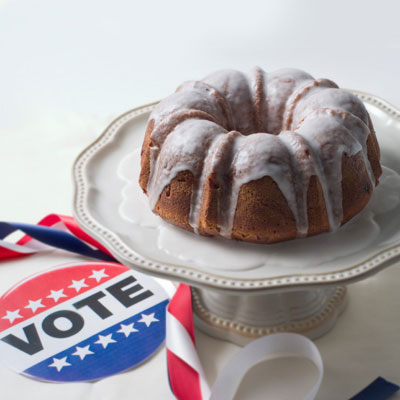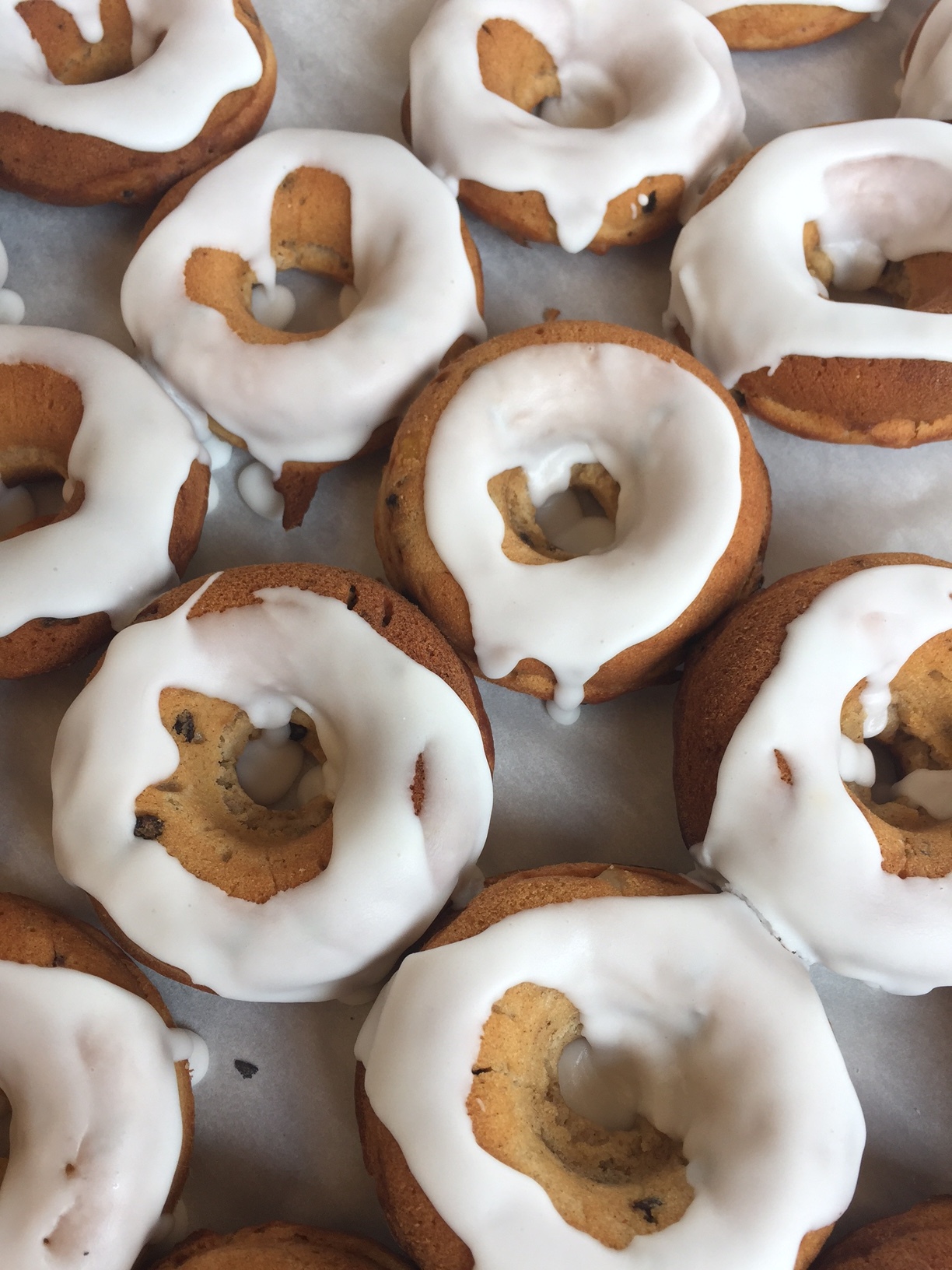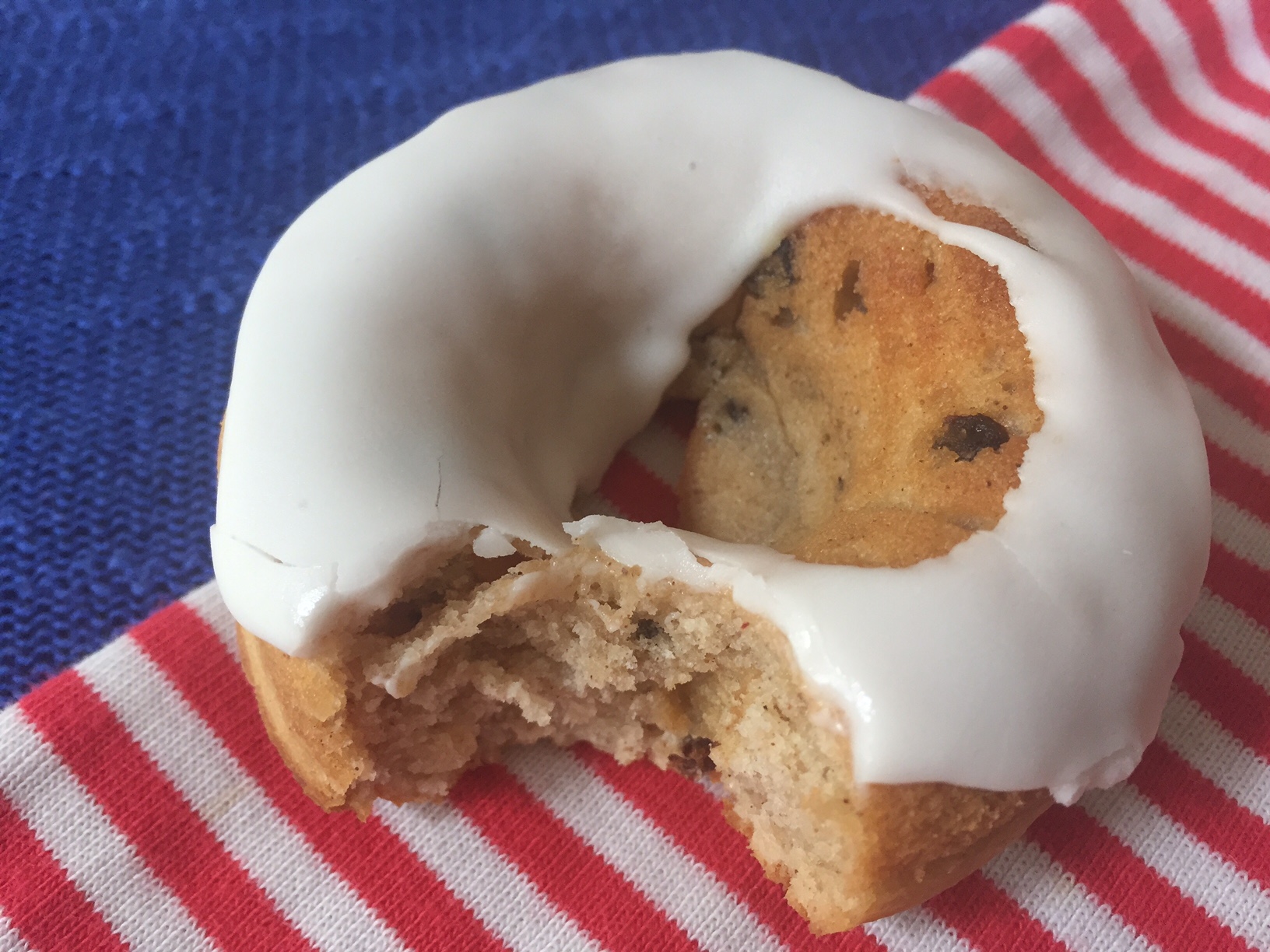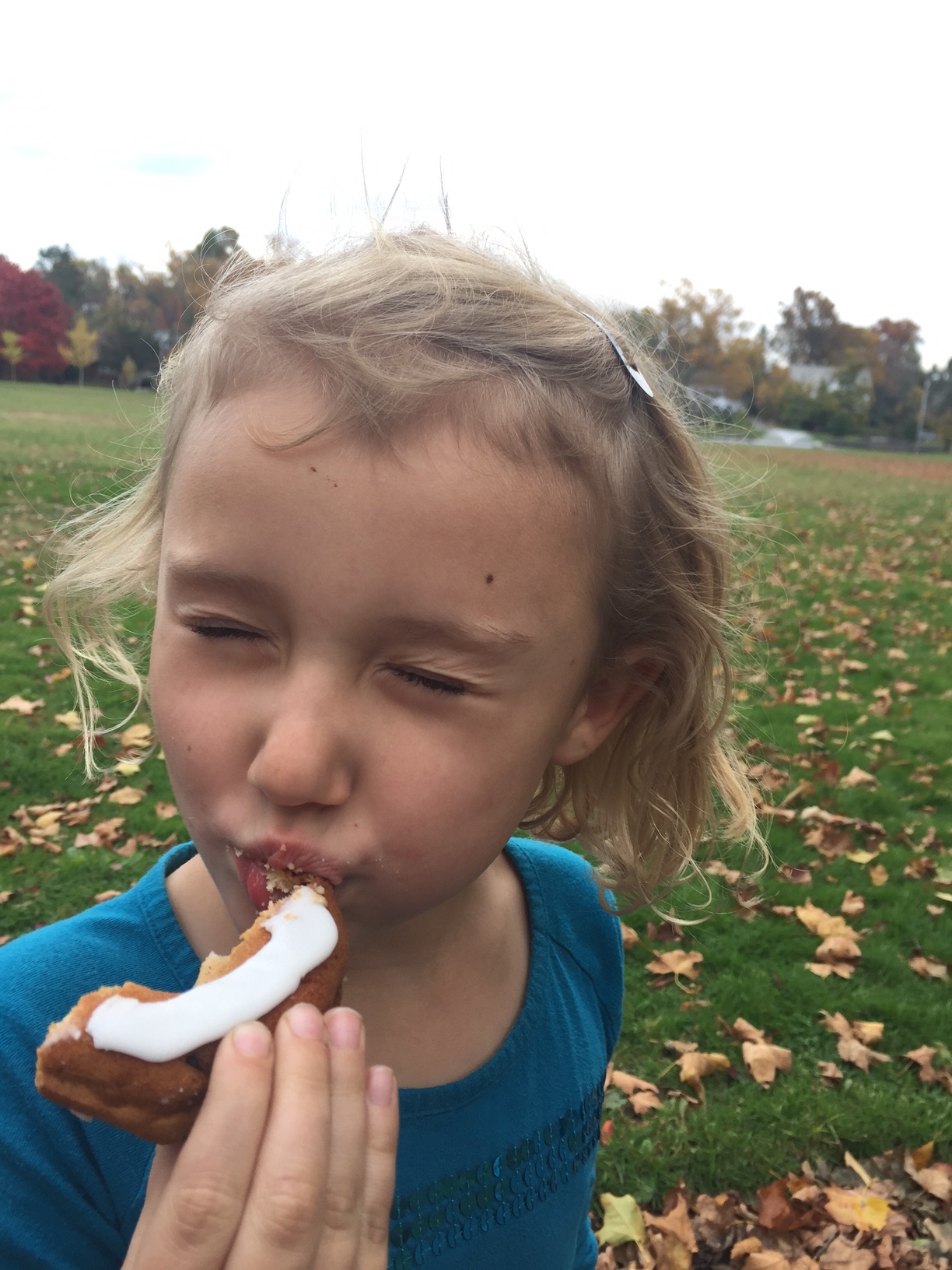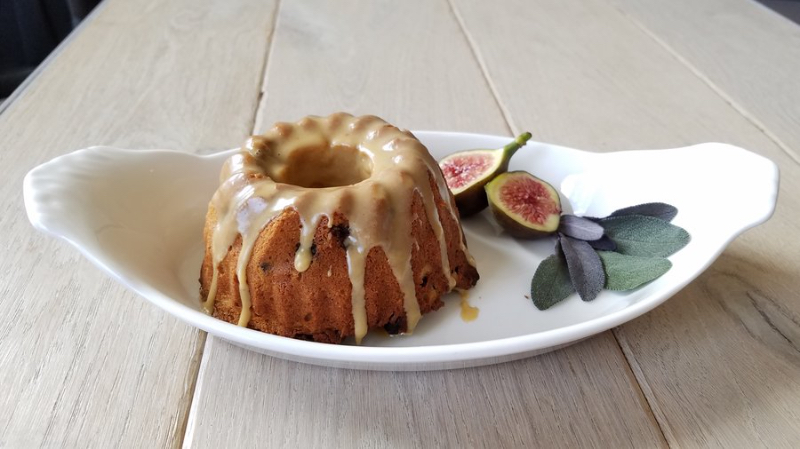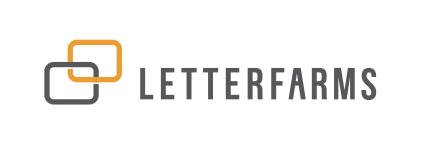Election Cake and Election Doughnuts 2016 by Allison Radecki
America, we’re going to the polls.
For some, Election Day may spark a memory of winding lines of waiting voters or the distinctive swish of the privacy curtain that separates personal choice from the hum of activity outside. But to me, Election Day once meant meat pies; specifically, Jamaican patties — butternut-hued, half-moon pockets, filled with ground beef and a wallop of spice.
My earliest voting memories involved standing, waist-level by my mother’s side, in the confines of a tiny booth, and then purchasing patties from the polling station food table after her vote was cast. Flakes of the buttery, curry-tinged dough always accompanied us home; sometimes within the brown paper bags in which they were wrapped, or else scattered on our shirts if we just couldn’t wait to take a post-ballot bite.
I have been thinking a lot about those Jamaican patties lately as I listen to the news, perhaps because I want to reach for anything that might mollify the taste of such a bitterly fought presidential campaign.
I am not the only one with this desire.
As a way to celebrate American culinary history, shine a light on voter rights and access, and link a scattered village of professional and home bakers, Susannah Gebhart and Maia Surdam, proprietors of Old World Levain (O.W.L.) Bakery in Asheville, North Carolina, are calling on their country to “Make America Cake Again.”
This project focuses upon historical Election Cakes, whose boozy, fruit-and-spice-filled recipe dates back to the early days of the 13 Colonies and the first baby steps of American Independence.
These New England-based confections, originally named Muster Cakes, were made by Colonial women for the men called upon for military training or “mustered’ by order of the English Crown. A close relation to the great cakes of England, these monstrously huge sweets were made to feed the masses of people gathered (and encourage turnout) at important civic events. Revelers would tear off a bit of the enormous cake to sustain them as they trained, debated, and congregated.
After the American Revolution, Muster Cakes became known as Election Cakes, and played a central role in the rowdy gatherings at the polls. Unlike today, the original American election days were national holidays marked by festive community celebrations that served plenty of food, wine, and spirits.
Within the first known cookbook written by an American, Amelia Simmons’ American Cookery (published in 1796), the Election Cake recipe calls for “thirty quarts flour, ten pounds butter, fourteen pounds sugar, twelve pounds raisins, three dozen eggs, one pint wine, one quart brandy…” along with loads of spices such as cinnamon and allspice. We’re definitely not talking about a puny pan here.
Long before American women were granted the right to vote, they would meet at community ovens across the colonies to bake these gigantic cakes as a way to participate in the democratic process.
In the spirit of highlighting the community aspect of this tradition and to encourage debate on today’s issues, the owners of O.W.L. Bakery have asked bakers across the country to riff on this old recipe and post their locally flavored results to social media using the hashtags #makeamericacakeagain and #electioncake.
A few participating bakeries will have their own interpretations of election cake for sale on November 8th, 2016. A percentage of proceeds from these sales will be donated to the League of Women Voters, a non-partisan, non-profit organization dedicated to fair voting access, education, and policy.
Though my beloved Jamaican patties may be but a spicy memory, I am blessed on voting day, once again. My local bakery, the Montclair Bread Company, in Montclair, New Jersey, is a creative participant in the Election Cake project.
Rachel Crampsey, head baker and owner of the Montclair Bread Co., met O.W.L. bakery’s Susannah Gebhart this past summer at a ‘honey summit’ for professional bakers. Along with a group of other historical recipe fans, the gathered bakers found themselves discussing Muster Cake and the idea for the Election Cake project took flight.
Working from a base recipe, researched and adapted by Richard Miscovich of Johnson and Wales University, Susannah asked Rachel if she would be interested in baking for November 8th. She eagerly signed on.
Rachel’s twist? She’s doing it in doughnut form.
“I like old recipes,” said Rachel, as she lowered a pan of speckled and glazed election doughnuts from a nearby cooling rack to the table before me. She sees this project as “a way to connect with fellow bakers and crafters. It might be obvious but we don’t get to spend much time together.” Along with civic involvement and sparking conversation, this crowd-sourced project is also a way to unite artisans who usually work alone amidst clanging pans and whirring mixers.
Montclair residents are familiar with Rachel’s decadent creations; maple bacon and Tres Leches donuts are two of my favorites, along with the summertime Margarita special, which contains tequila and features a salted rim. Her doughnuts have a cult following, with snaking lines that extend down the block on holidays and farmers market mornings.
To adapt the historic recipe into an Election Cake Doughnut, Rachel took inspiration from a family recipe for Barnbrack (báirín breac), a traditional Irish bread/cake, dotted with raisins. The resulting doughnut, whose dough is completely different than Montclair Bread Co.’s signature brioche, contains whiskey, currants, candied oranges and lemons. The fruit is soaked in black tea before being mixed in. Dense, glazed, and dunkable, I enjoy it most with a cup of milky tea.
The Election Cake doughnut will only be available at the Montclair Bread Company on November 8th, 2016, along with a range of other patriotically clad brioche doughnuts.
“Food, in general, is a way to unite people,” reflected Rachel, as we chatted about the the role of bakers and connecting the community. “It is no surprise that, for centuries, there was a village baker and community ovens where everybody brought their raw dough. In a way, baking was a civic duty. As a business owner, I try to abstain from expressing political views. But, this (non-partisan) project allows me to be involved, so that every member of the community can participate.”
Rachel, an accomplished runner, is no stranger to community building. Between founding the local Welcome to Walnut Street street fair, celebrating National Doughnut Day (with doughnut story time and donut decorating for local children) and launching the Fueled by Doughnuts Running Club (“a running club with a doughnut addiction”), she is constantly bringing people together.
Now, please, get out and vote! Bake a cake. And, maybe, eat a doughnut, too.





